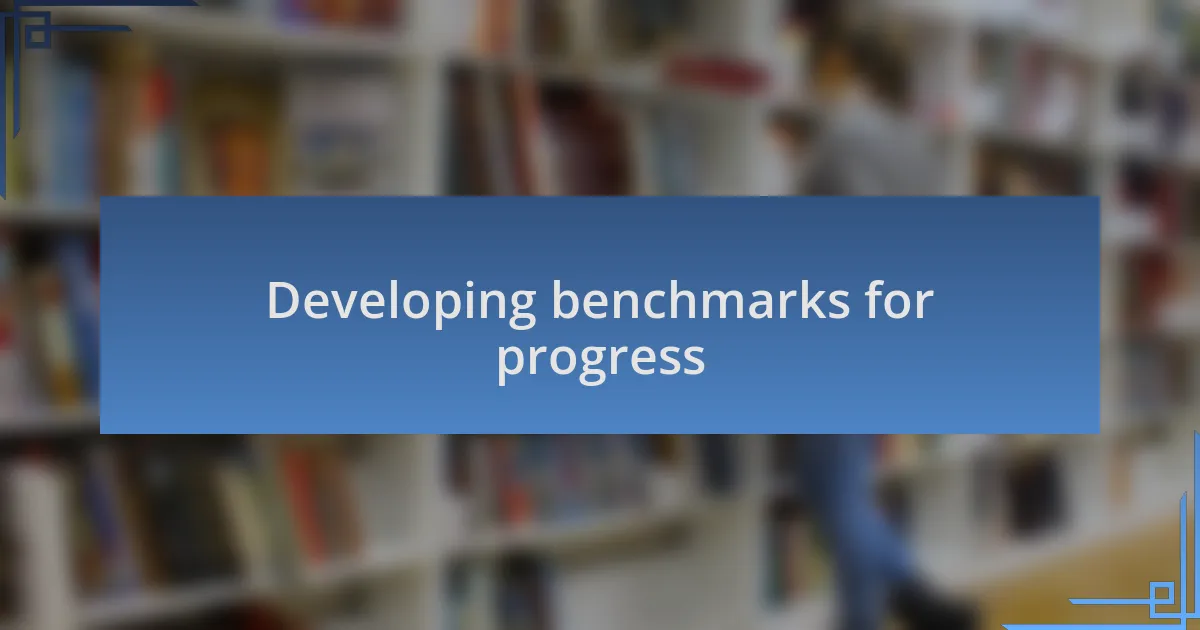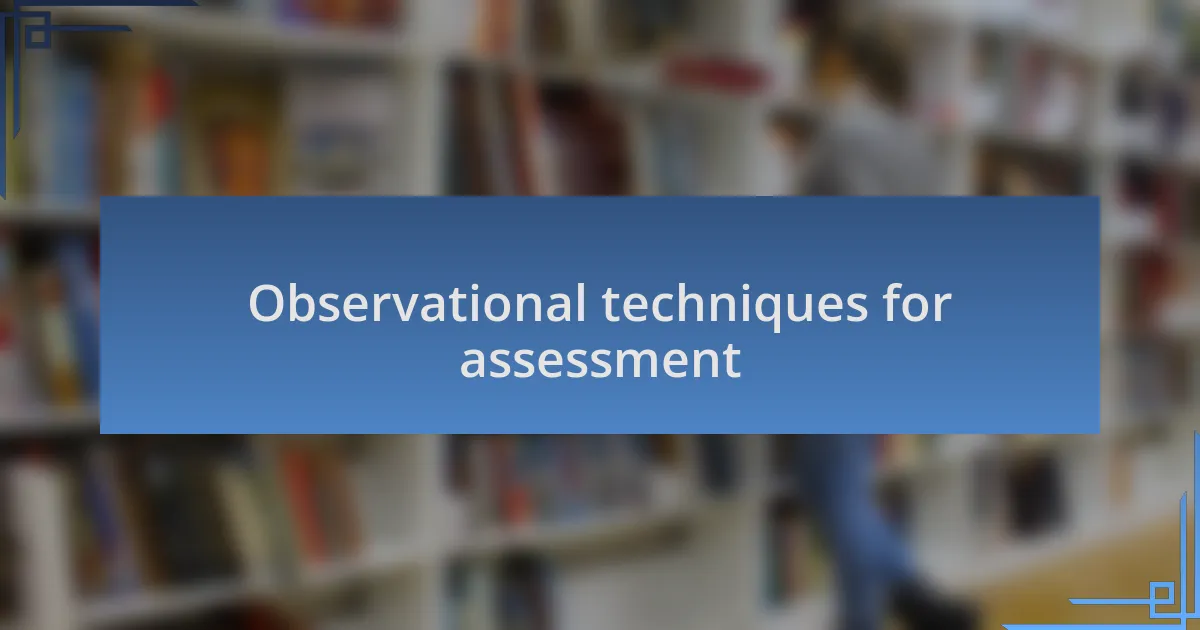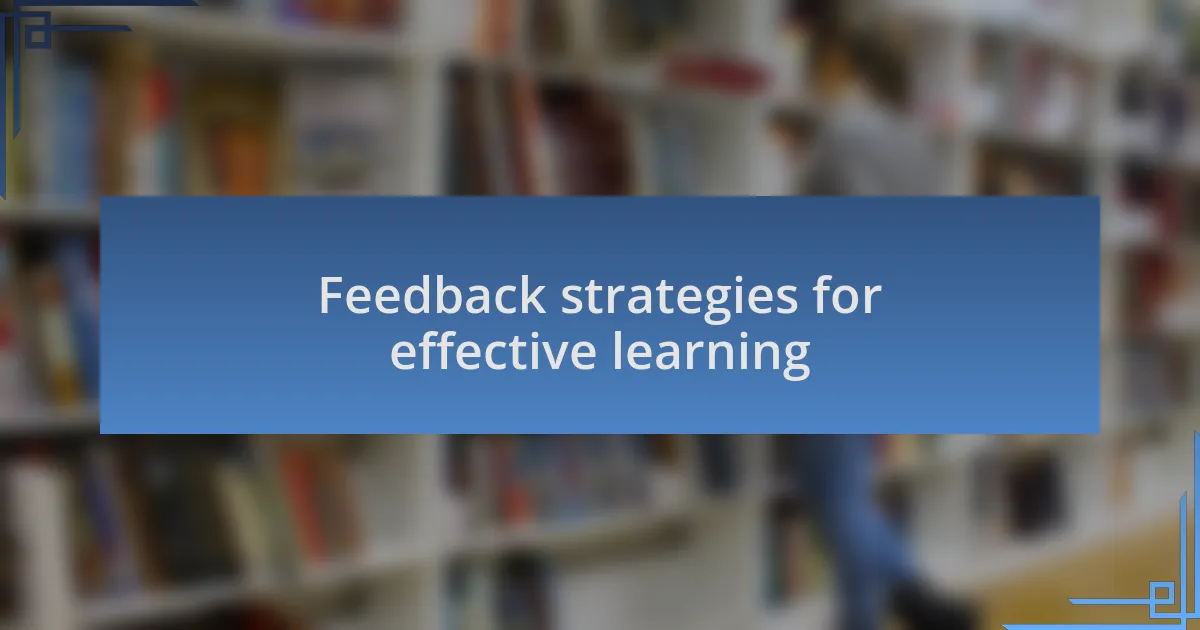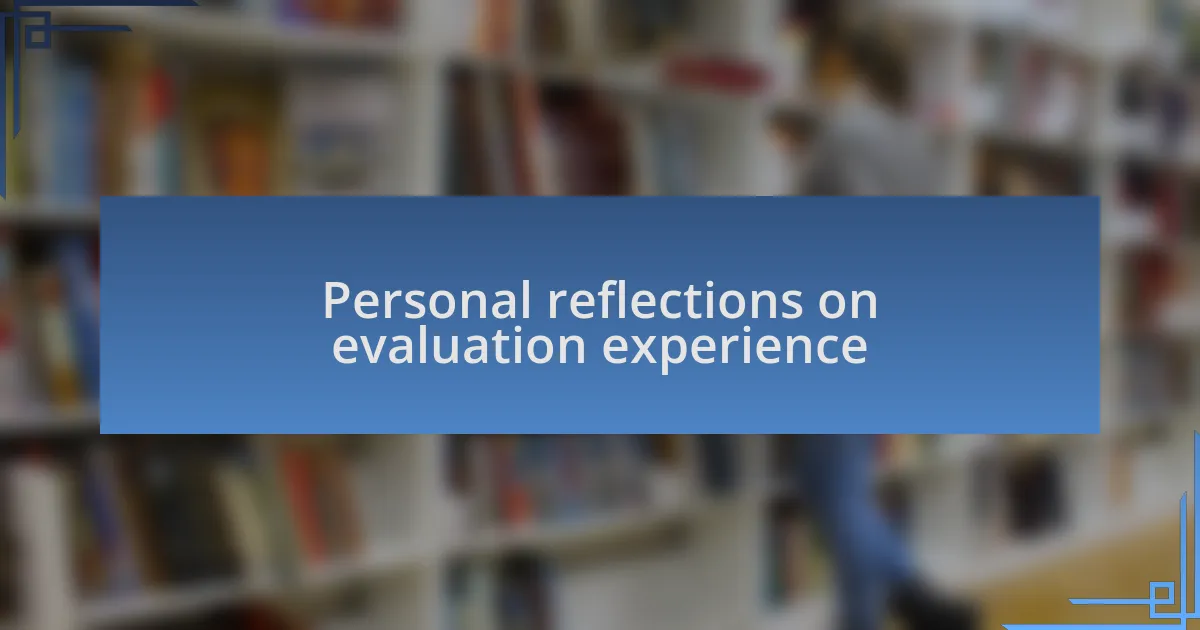Key takeaways:
- Dyslexia evaluation methods should include standardized tests, observational assessments, and parent-teacher interviews to provide a comprehensive understanding of a student’s learning journey.
- Tracking student progress through data not only reveals areas of improvement but also fosters meaningful conversations and personalized learning paths.
- Emotional well-being is crucial in evaluations, and adjustments to benchmarks and assessment methods can decrease anxiety and enhance a student’s sense of achievement.
- Feedback should be timely, specific, and visually accessible to motivate students and encourage a sense of ownership in their learning process.

Understanding dyslexia evaluation methods
Understanding dyslexia evaluation methods is crucial in identifying the unique challenges students face. Through my experience, I’ve seen various approaches, such as standardized tests, observational assessments, and interviews with parents and teachers; each provides a different lens into a student’s learning journey. For instance, I remember a student who excelled in creative tasks but struggled significantly with reading. Her evaluation revealed that her strengths were not acknowledged in traditional assessments.
It’s fascinating how each evaluation method uncovers distinct patterns of strength and weakness. I once attended a workshop where a professional emphasized the value of qualitative assessments, which can reveal much about a student’s learning preferences. Would you ever have considered that a simple conversation could provide insights that numbers alone might miss? I found this approach invaluable, as it fosters a deeper understanding of the student’s needs.
Moreover, reflecting on the emotional aspect is essential. When evaluations are conducted in a supportive environment, they can affirm a student’s self-worth rather than diminish it. In one case, I witnessed a student light up when her learning differences were framed as unique strengths. It made me wonder: How often do we overlook the emotional ramifications of these evaluations? Recognizing that each method carries weight means we must choose wisely to support our students effectively.
![]()
Importance of tracking student progress
Tracking student progress is a fundamental aspect of addressing dyslexia effectively. I recall a teaching moment when I closely monitored a student’s reading fluency over a few months. The graph I created not only highlighted his improvement but, surprisingly, also revealed some unexpected dips. This data prompted a conversation about his experiences, uncovering factors that affected his learning environment. Isn’t it interesting how data can lead to deeper, more meaningful discussions?
In my experience, tracking progress helps create personalized learning paths. I once had a student who encountered frequent frustration during word recognition tasks. By maintaining daily logs, I was able to pinpoint specific areas of struggle, allowing me to tailor interventions that truly resonated with him. This approach not only empowered him but also reinforced the importance of highlighting incremental successes. When we celebrate those small victories, doesn’t it inspire students to keep pushing forward?
Finally, the emotional dimension of tracking progress can’t be understated. I remember guiding a parent through their child’s progress report, where we addressed both achievements and ongoing challenges. Watching their face light up as we focused on the gains, rather than just deficits, reaffirmed the child’s potential. How often do we get trapped in a deficit mindset? Emphasizing progress shifts our perspective, ensuring both students and parents feel encouraged and supported throughout the journey.

Developing benchmarks for progress
Developing benchmarks for progress is essential to gauge student learning effectively. I always start by identifying specific, measurable objectives tailored to each student’s unique challenges. For instance, when I worked with a student who struggled with decoding, we set a benchmark of mastering ten new sight words per week. Tracking her success against this benchmark was not just about numbers; it reflected a growing confidence that was genuinely heartwarming to witness.
Moreover, I have found that establishing regular check-ins allows for a more dynamic approach to progress evaluation. During one of these check-ins with a student, we explored not only the quantitative data but also his feelings about his progress. It was revealing—he expressed excitement over being able to read a short story independently, which, on the surface, might not seem like a monumental leap but was, in fact, a transformative moment for him. How many times do we overlook these smaller milestones in favor of larger goals, forgetting that they can often mean more than any test score?
When setting benchmarks, I also consider the emotional component. Once, a parent shared with me that her child felt overwhelmed trying to reach a reading level benchmark I had set. Together, we revisited the goals and adjusted them to better reflect her son’s current abilities. This not only decreased his anxiety but also fostered a sense of achievement as he began to exceed the new, realistic targets. Isn’t it crucial to remember that progress should celebrate individual journeys and cater to emotional well-being?

Tools for measuring student progress
Effective tools for measuring student progress are vital in any educational setting. I often utilize formative assessments, such as quizzes and interactive activities, that give me immediate feedback on a student’s understanding. For example, after a session focusing on phonics, I might ask a student to read a short passage and identify specific sounds. This not only assesses their current grasp of the material but also helps me gauge their excitement or frustration, which directly influences my next steps.
In addition, I’ve found that digital platforms can provide valuable insights into a student’s learning journey. One time, I used an online reading program that tracked a student’s fluency and comprehension over time. The data showed exact improvements, but what truly moved me was seeing the student’s pride when she unlocked new levels. Can you imagine the joy when students witness their progress visually represented? It’s these moments that reinforce their motivation to continue working hard.
Moreover, I believe that peer assessments can be incredibly powerful in the learning process. I once facilitated a small group activity where students provided feedback on each other’s reading skills. The transformation was profound; not only did they become more engaged, but they also developed empathy and understanding for one another. How often do we underestimate the potential of collaborative learning? These experiences can transform not just their academic skills but their social-emotional development as well.

Observational techniques for assessment
Observational techniques are invaluable when assessing students with dyslexia. In my classroom, I’ve taken time to watch students during independent reading sessions. For instance, when I notice a student pausing frequently to sound out words, I pay attention to their body language. Are they frustrated? Excited? Their reactions provide a wealth of information that can’t be captured through tests alone.
One memorable experience involved a young student who struggled with word recall. During a group reading activity, I made it a point to observe her interactions. I saw how she lit up when discussing the characters in the story, revealing her deep comprehension despite her reading challenges. This taught me that while formal assessments are useful, observing a student’s engagement can often reveal their true understanding and interests.
Additionally, I like to incorporate casual conversations about texts during breaks. Once, a student opened up about his favorite book, sharing insights that surprised me. This informal dialogue not only highlighted his comprehension but also strengthened our rapport. Have you ever considered how such simple interactions could provide deeper insights into a student’s progress? Engaging with them outside the confines of structured assessments truly creates a more holistic view of their learning journey.

Feedback strategies for effective learning
Feedback plays a crucial role in fostering effective learning, especially for students with dyslexia. I’ve found that giving timely and specific feedback helps students understand their progress clearly. For example, after a reading session, I might highlight not just what they struggled with, but also what they did well. This balanced approach not only motivates them but also reinforces their strengths.
One strategy I’ve employed is to use visual cues during feedback. I often use color-coded notes; green for areas they excel in and red for areas needing improvement. Seeing this visually can really resonate with students and make the feedback more tangible. In one instance, a student who usually felt overwhelmed by criticism reacted positively to this approach. Instead of feeling disheartened by the red notes, he appreciated the clarity they provided and worked hard to turn those into green next time.
Additionally, I involve students in the feedback process by asking them to reflect on their own understanding before I step in. This self-assessment encourages ownership of their learning and allows them to voice their thoughts. I remember a time when a student identified a specific reading strategy that worked for him, which empowered him to take charge of his learning journey. Have you tried getting your students involved in how they receive feedback? This strategy not only builds confidence but also helps them develop a clearer roadmap for further growth.

Personal reflections on evaluation experience
Reflecting on my evaluation experiences, I can’t help but recall a student who initially resisted assessments. There was a time when I noticed she would avoid eye contact during evaluations. It made me realize how vital it is to create a safe space for them. By gently reassuring her that evaluations are stepping stones, not obstacles, I observed a remarkable shift in her demeanor. Suddenly, she began to engage, revealing her true potential.
One particularly memorable evaluation was when a student expressed her frustration over written assessments. I thought about my own challenges with learning and how evaluation methods often left me feeling anxious. So, I adapted the process by incorporating verbal assessments. It was a breakthrough! She not only demonstrated her understanding but also gained confidence. Have you ever considered altering your evaluation method to match a student’s comfort level?
Each evaluation session has its emotional highs and lows. I remember moments of joy when students succeeded beyond my expectations, and times when I felt their frustration deeply. It made me reflect on my own learning journey. When I empathize with their struggles and successes, I find that evaluations become more collaborative and enriching for both of us. How do you navigate those emotional peaks and valleys in your own evaluations?